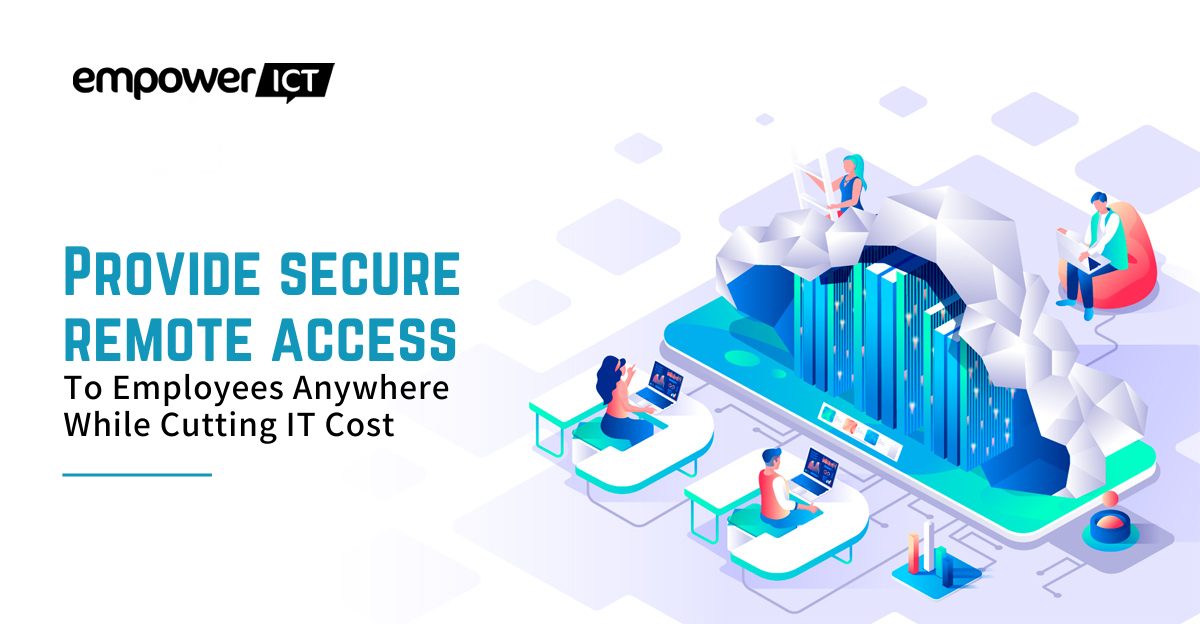A considerable change has been witnessed in the way the end-users consume IT in the past few years. The rise in workforce along with their preference to work from the location of their convenience has further encouraged the enterprises to devise a strategy that perfectly fit in the growing needs of that workforce. The use of virtualization technology, Virtual Desktop Infrastructure (VDI) in the recent years is been considered the right answer to strike a balance between windows-only and platform-agnostic applications, enterprise network and public internet, enterprise-owned devices and user-owned devices.
What is Virtual Desktop Infrastructure (VDI)?
VDI is basically a virtualization solution, allowing users to access their desktop using a remote desktop protocol by hosting and administering user desktops/virtual machines on virtual infrastructure in a datacentre. This means that it segregates desktop operating system, applications, and data from a hardware and enables multiple user desktops to run as separate virtual machines over a network. Since data and applications reside on a central server, the VDI environment separates the users from each-other, giving each user not only their own virtual machine for desktop computing, but also allocating granular resources to them. Additionally, it also safeguards users from application crashes and faults in operation system that may occur by the activities of other users.
Benefits of VDI
VDI brings together the benefits of centralized and distributed computing. With several unique features, VDI provides innumerable advantages over the traditional computing models:
Server Based Computing
- Promotes Data Security: Since applications and data are within the confines of a central server, it remains secured.
- Simplifies Management: Centralized storage of data and applications enables IT administers to manage desktops in a much simple and effective way. Also, rolling out OS, application and bug fixes becomes easy since user profiles are stored centrally.
- Decreases Hardware Expenditures: The consolidated and reduced upgrade cycle reduces hardware costs for server and client-side equipment.
- Anywhere, Anytime Access: Central server data storage enables an independent access of the time, place, and device to the end-users.
Distributed Computing
- End-user Isolation: VDI protects each user from problems generated by other users. This protection helps in eliminating the operating system crashes that can affect 30 to 40 users at one time. The distributed computing retains the level of isolation in users and hence promote the concept of working independently, without really affecting the effectiveness of all the users at one time on the server.
- Improved Performance Isolation: In VDI environment, the end-users can expect full access to their own CPU, memory and disk resources. Hence, the companies can take advantage of this new technique with the confidence that their infrastructure can accommodate unforeseen applications without compromising any user’s desktop experience. This sharing in the CPU borrowing allows maintenance of the users’ isolation of PC environments.
Conclusion
With the diverging needs of the workforce in the organization, Virtual Desktop Infrastructure has become an extremely relevant technology solution to bring in use. Empower ICT, a top telecom company in Australia is a right partner for you that can optimize the operation and administration of your organization by bringing an overall improvement in the work efficiency. Having an experience of over 10 years in the industry with a highly trained team, they can definitely guide you in best way possible by providing you with the most stable and secured solution, depending on your requirements. This customized solution that is primarily meant to support the needs of your end-users can surely accelerate your business performance and come with a better output.

